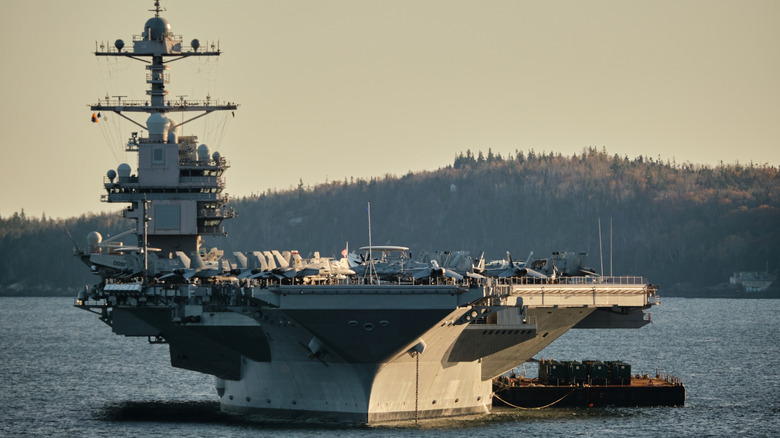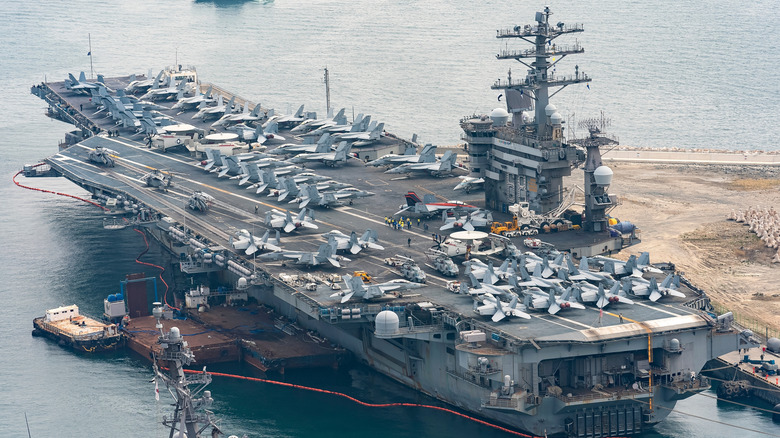What's The Lifespan Of An Aircraft Carrier? Here's How Long They Stay In Service
Aircraft carriers are important for executing military missions during wartime and maintaining stability during peacetime. Like every ship on the water, though, they have a shelf life. Aircraft carriers stay in service for around 50 years, but they do have to undergo a series of checks at the midway point of their lifespan to ensure they can make it through the rest of service without issue. This process is called Refueling and Complex Overhaul, or RCOH, and can take up to four years.
The process involves refueling nuclear reactors, addressing maintenance issues, and upgrading weapons. In fact, RCOH is so important that aircraft carriers cannot be retired until they complete it. Out of the 11 U.S. aircraft carriers in service, six have already finished RCOH, meaning they are in the second half of their lifespan. The USS John C. Stennis, a Nimitz-class carrier, is also expected to return to service after completing RCOH in October 2026. As the Nimitz-class carriers continue to age, the U.S. Navy has already started to introduce the next generation of aircraft carriers with the USS Gerald R. Ford.
What happens to an aircraft carrier at the end of its lifespan?
The two oldest American aircraft carriers that are still in service are the USS Nimitz and the USS Dwight D. Eisenhower, although they are reaching the end of their lifespans. The U.S. Navy plans to decommission the Nimitz, originally commissioned in 1975, by the spring of 2026 in Norfolk, Virginia. The Eisenhower, which entered active service in 1977, is expected to keep going at least through 2029.
There are several options of what to do with an aircraft carrier when it is retired. Some of them have become museums, while others have been put on sale. In 2021, the U.S. Navy sold the USS Kitty Hawk and the USS John F. Kennedy to a Texas-based company called International Shipbreaking Limited for the bargain price of one penny each. The price had less to do with the value of the two aircraft carriers, and more to do with the fact that the buyer would take on the massive task of dismantling them. This could be appealing to companies that take on the project because they would also get to pocket any profits that could be made from the sale of scrap metal.
However, it's not guaranteed there is any profit to be made because the price of decommissioning the carrier can be so huge. The U.S. government just wouldn't be able to balance the money spent versus the money earned, especially because most of the technology onboard is rapidly aging and not worth that much. In the end, the time and money required for the task seems better spent on preparing the next generation of carriers.

